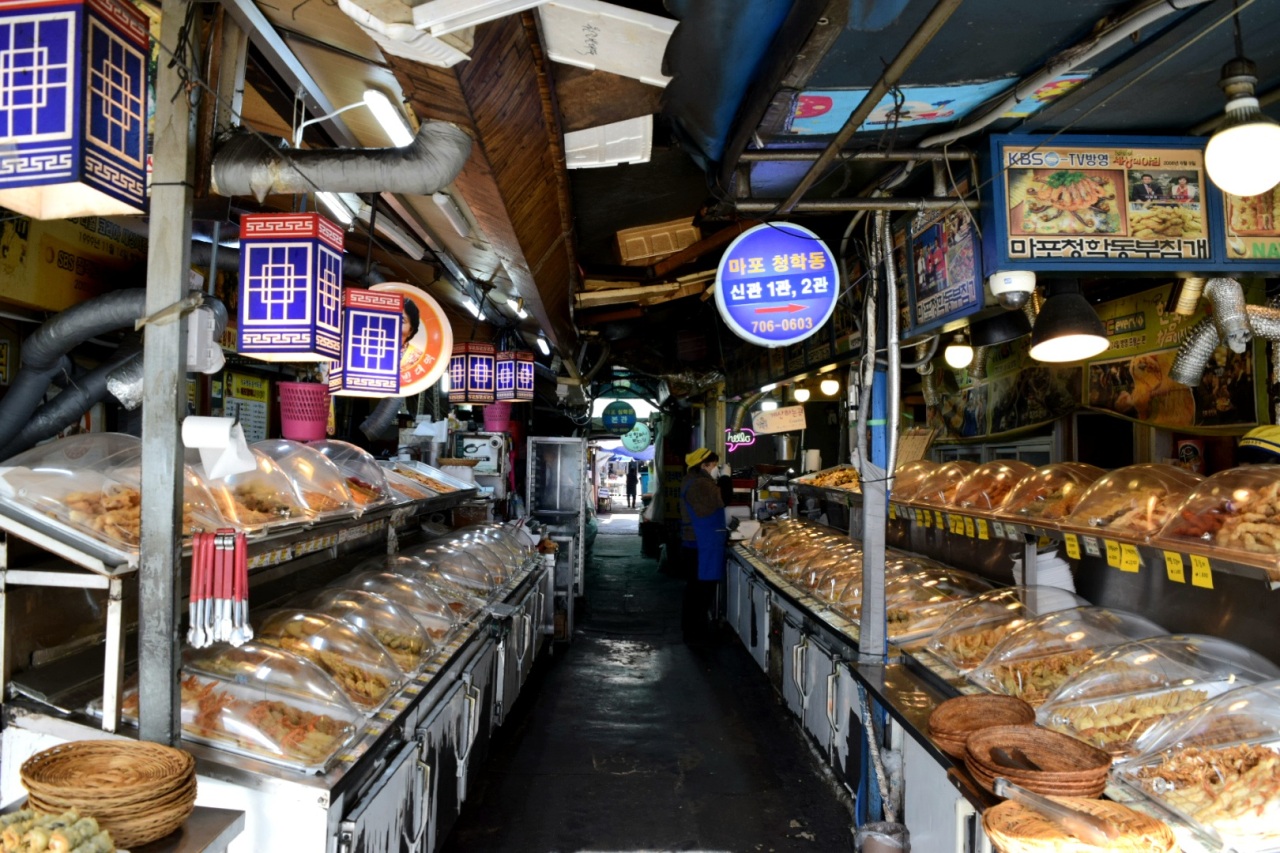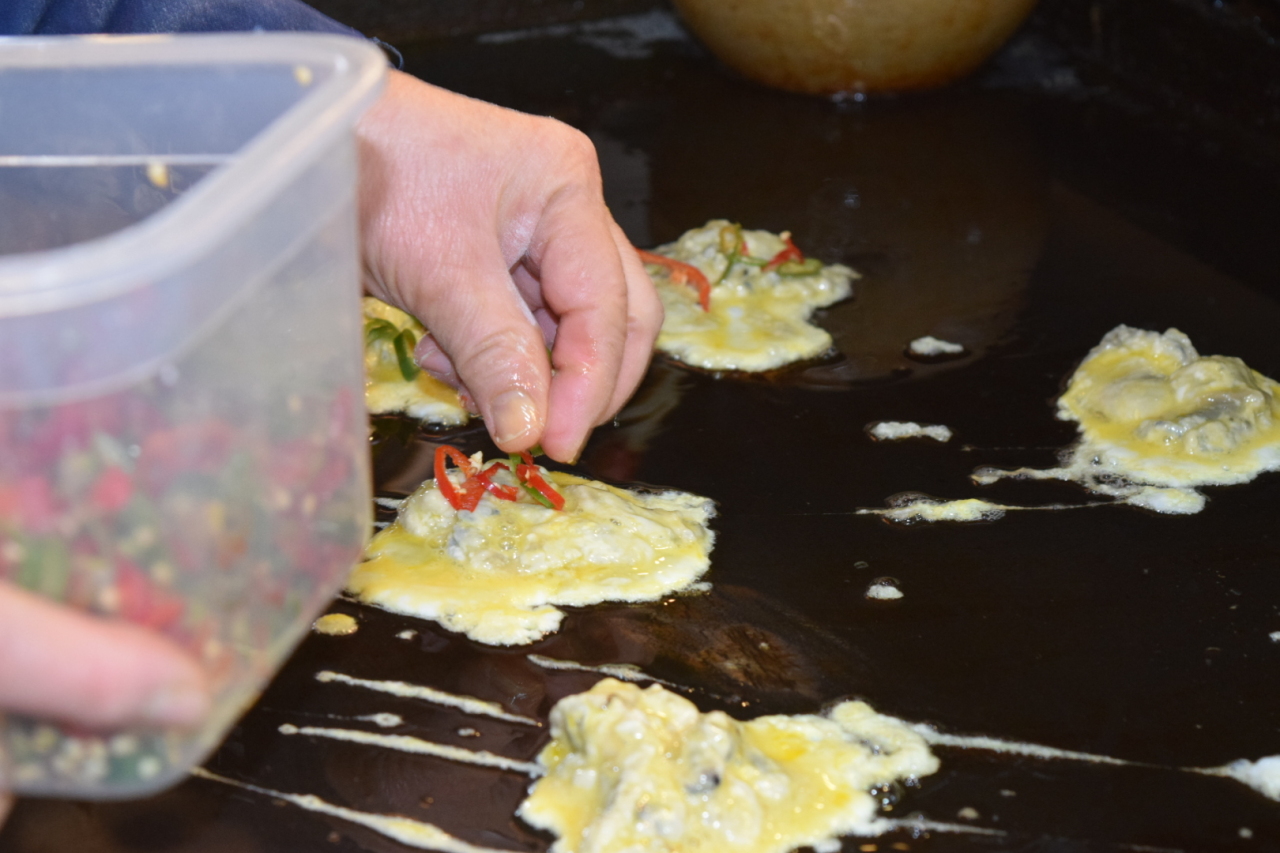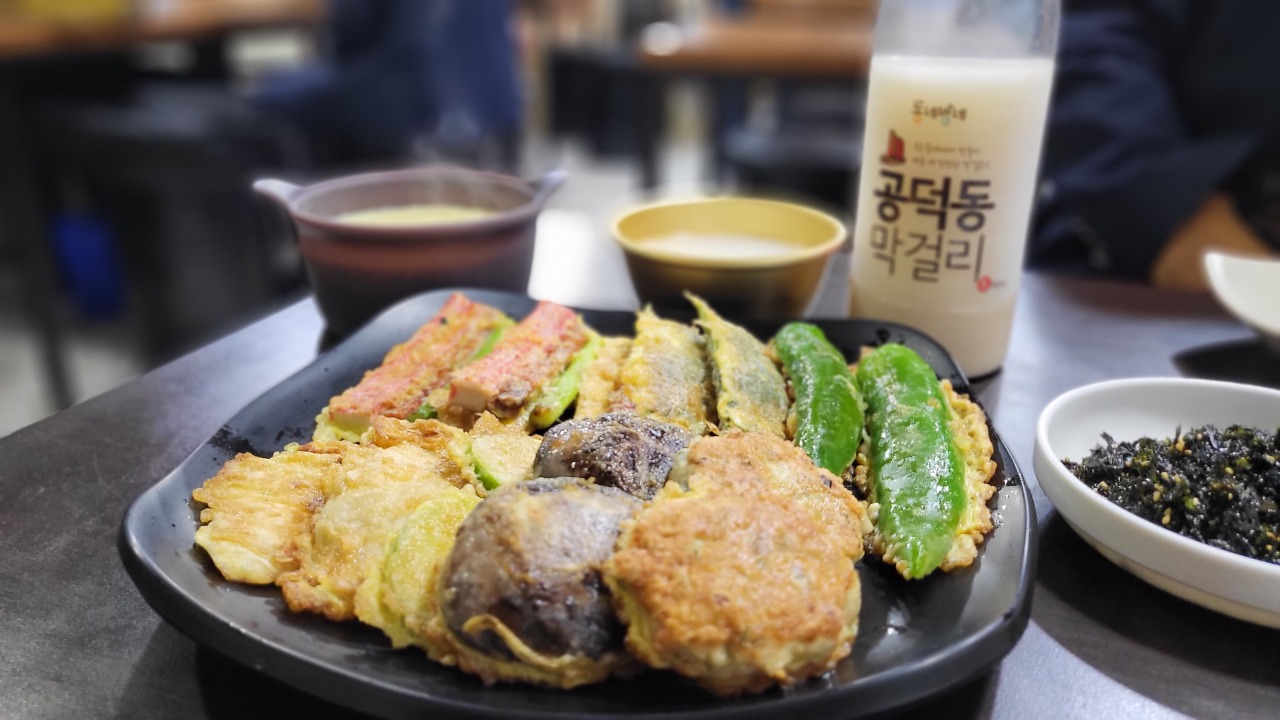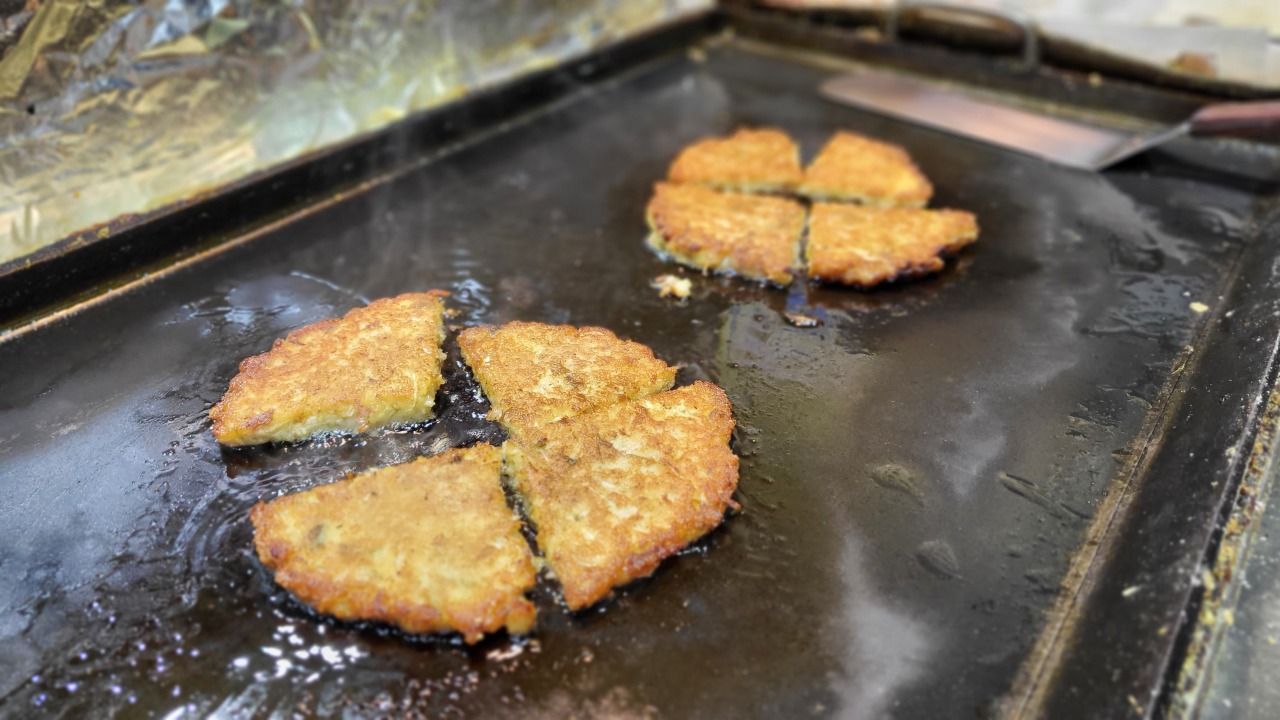 |
Jeon eateries are lined up on either side of Gongdeok Market’s Buchimgae Alley. (Kim Hae-yeon/The Korea Herald) |
The official campaigning period for the upcoming presidential election kicked off Tuesday, with most candidates heading to traditional markets on the first day. One of the pledges made at these stumps over the past several elections has been revitalization of traditional markets, a pledge clearly aimed at the merchants.
Before the onslaught of mass retailers, traditional markets were crowded day and night, humming with vibrant energy.
Today, many neighborhood taditional markets struggle to survive as shoppers shun them in favor of discount retailers and larger supermarkets. Often it is the aroma of the traditional markets‘ eateries that beckon people to visit.
Around Gongdeok Station exit 5, you will notice an array of stores and a sign with a tiny portrait of an old lady. A sign which reads, “Mapo Grandma’s Bindaetteok” marks the entrance to the well-known Buchimgae Alley of the Gongdeok Market.
Gongdeok Market‘s jeon (Korean fried pancakes), also referred to as buchimgae, trace their roots back to the 1980s.
 |
Different types of jeon, or buchimgae, are neatly stacked on trays. (Kim Hae-yeon/The Korea Herald) |
 |
Egg batter-coated mushroom jeon are grilled with sliced chili pepper toppings. (Kim Hae-yeon/The Korea Herald) |
On display at the stands of the jeon eateries are over 50 kinds of colorful jeon and fried finger foods which are cooked each morning. Consisting of vegetables, seafood and meat, they are neatly stacked in rows.
The unique charm of jeon spots at the market is that customers can pick and choose different types of jeon into a basket. They are priced according to weight, but a small basket of jeon usually costs at around 7,000 won, and a large one 14,000 won.
For thirsty souls, Gongdeok makgeolli, a type of traditional rice wine, is on standby at all jeon eateries. Unlike most Korean makgeolli breweries that are located outside Seoul, Gongdeok makgeolli is made in Daeheung-dong, only a few minutes away from the market.
On a weekday afternoon, a man in his 60s reminisced about cheerful days at the market. “No one would believe how crowded this place was a few years before the pandemic. Not even the regulars seem to come these days,” the man said.
When asked how he feels about Buchimgae Alley’s continued strong presence, the man smiled as he pointed to the end of the alley.
“At the shops in front, you have the fun of picking what you want, straight from the counter. There on your left is another smaller place that makes fresh jeon the minute you order. Only Mapo people and people in the know go there.”
Leading up to the end of the path is a red sign that reads, “40-year family tradition, Kaesong-style buchimgae” for Moisae Buchimgae. The sign has a portrait of a man who appears to be the owner.
Walking in to order medium-sized modeumjeon (assorted jeon), I am greeted by the owner, who casually offers a bottle of Gongdeok makgeolli to down with the jeon.
 |
A set of medium-sized modeumjeon (assorted jeon) and Gongdeok makgeolli are served at Moisae Buchimgae in Gongdeok Market. (Kim Hae-yeon/The Korea Herald) |
 |
Nokdujeon, or Korean mung bean pancakes, are being made at Moisae Buchimgae in Gongdeok Market. (Kim Hae-yeon/The Korea Herald) |
Kaesong-style buchimgae are not as well known as other North Korean dishes such as mandu and naengmyeon, which vary according to region.
Moisae Buchimgae’s jeon are made upon receiving an order, and take some 15 minutes to be served. The jeon did not have a particularly sharp flavor or strong aroma, but the texture was less crispy and much softer compared to those at neighboring jeon stores.
“My parents are from Kaesong, so I grew up having their style of buchimgae and manduguk (dumpling soup),” Park Jeong-hwan, owner of the Moisae Buchimgae, said. “The difference I can tell you is that we add tofu in the stuffing of our signature dongeurangtaeng (meatball-like jeon). My mother-in-law is a farmer, so we also get fresh ingredients from her from Gyeonggi Province.”
A dish of modeumjeon ranges in price from 17,000 won to 55,000 won depending on its size, and mandu jeongol (dumpling hot pot) is 25,000 won to 35,000 won. The place quickly fills up after 6 p.m, since the market is adjacent to large office buildings.
Although some stay open on weekends, most jeon eateries of Gongdeok Market are open five days a week, including Moisae Buchimgae.
By Kim Hae-yeon (
hykim@heraldcorp.com)











![[Weekender] Korea's traditional sauce culture gains global recognition](http://res.heraldm.com/phpwas/restmb_idxmake.php?idx=644&simg=/content/image/2024/11/21/20241121050153_0.jpg)
